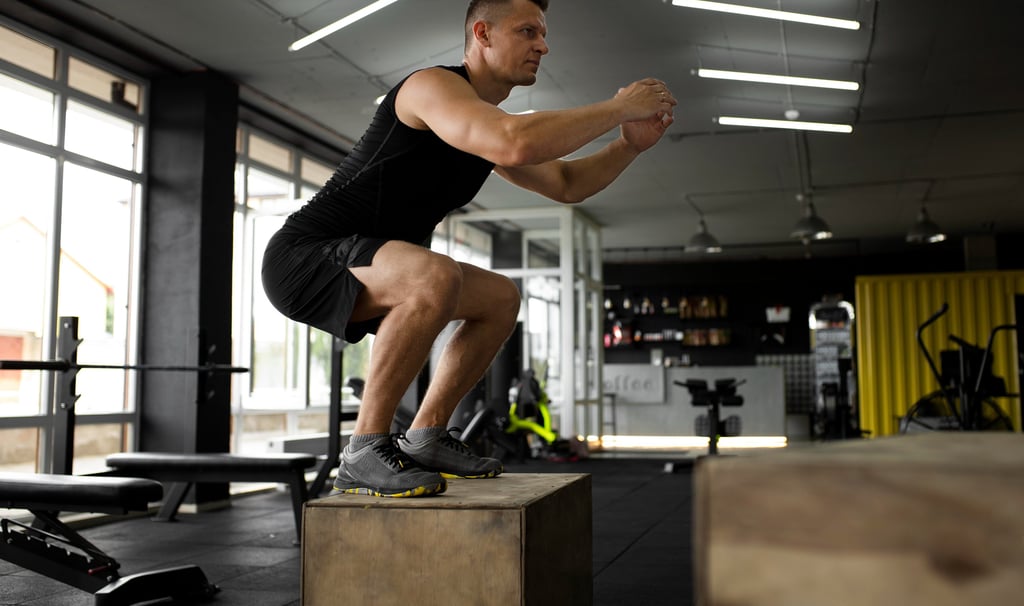Plyometric Exercise
Plyometric exercises are dynamic movements designed to increase power, speed, and overall athletic performance by harnessing the power of explosive force. These high-intensity workouts involve rapid stretching and contracting of muscles, which can significantly improve strength and agility. To discover how plyometrics can revolutionize your fitness routine and take your athletic performance to the next level, dive deeper into our blog.
SPORT
9/13/20242 min read


Plyometric exercises are a unique and exciting way to build explosive power and improve athletic performance. Unlike traditional strength training, which focuses on lifting heavy weights slowly, plyometrics involves performing movements with maximum effort in short bursts of time. This approach is all about developing what’s known as speed-strength, which combines both speed and power to help you move more explosively and efficiently.
What Are Plyometric Exercises?
Plyometrics are exercises that involve quick, powerful movements. They work by stretching a muscle rapidly (eccentric phase) and then immediately shortening it (concentric phase), which enhances the muscle’s ability to generate force quickly. Common plyometric exercises include: Jumping Exercises, Bounding and Hopping, Throwing Movements, Running Drills, and Kicking Exercises.
Why Do Plyometrics Matter?
Plyometric training offers a range of benefits that make it a valuable addition to any fitness routine:
1. Enhanced Athletic Performance: For professional and Olympic athletes, plyometrics are a go-to for increasing explosive power, speed, and agility. This translates into better performance in sports that demand quick, powerful movements, from basketball to soccer.
2. Boosted Metabolism and Weight Loss: The intensity of plyometric exercises can elevate your heart rate and metabolism, leading to increased calorie burning both during and after your workout. This makes it an effective way to support weight loss goals.
3. Support for Rehabilitation: Individuals recovering from injuries or surgeries can benefit from plyometrics as they help restore strength and function. These exercises improve muscle coordination and movement patterns, which are essential for a full recovery.
4. Improved Cardiovascular Fitness: The high-intensity nature of plyometrics challenges your cardiovascular system, helping to improve heart health and overall endurance.
Risks and Considerations
While plyometrics offer impressive benefits, they also come with risks that are important to consider:
1. Injury Risk: Because plyometric exercises involve high-impact movements, there’s a higher risk of injury compared to lower-intensity exercises. It’s crucial to use proper technique and ensure your body is adequately prepared for the demands of these exercises.
2. Need for Conditioning: Before diving into plyometric training, it’s important to have a solid foundation of strength, flexibility, and body awareness. Individuals new to exercise or with existing physical issues should focus on building these aspects first.
3. Importance of Technique and Supervision: Performing plyometric exercises with correct form is essential to avoid injuries. Working with a knowledgeable trainer can help ensure you’re doing the exercises correctly and safely.
4. Gradual Progression: Start with simpler, lower-intensity plyometric movements and gradually increase the difficulty as your strength and technique improve. This approach helps to minimize the risk of injury and maximize the effectiveness of your training.
Plyometric exercises are a powerful tool for enhancing your strength, speed, and overall athleticism. Whether you’re an elite athlete looking to gain a competitive edge or someone recovering from an injury, incorporating plyometrics into your routine can lead to significant improvements in performance and fitness. Just remember to approach these exercises with care and proper conditioning, technique, and supervision are key to reaping the benefits while minimizing the risks. With the right approach, plyometrics can unlock new levels of power and agility, making them a valuable addition to any fitness regimen.
Read more:
Physiotherapy in Bali
Your Path to Optimal Health.
Contact us
Subscribe us
© 2024. PT BUMI MEDIKA BALI. All rights reserved.
